
| Painted Pine Moth LYMANTRIINAE, EREBIDAE, NOCTUOIDEA | (donherbisonevans@yahoo.com) and Stella Crossley |
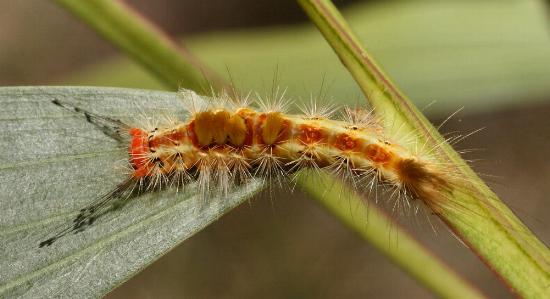
(Photo: courtesy of
Trevor Jinks, North Burnett, Queensland)

| Painted Pine Moth LYMANTRIINAE, EREBIDAE, NOCTUOIDEA | (donherbisonevans@yahoo.com) and Stella Crossley |

(Photo: courtesy of
Trevor Jinks, North Burnett, Queensland)
This Caterpillar is usually brown and hairy, and with four dorsal tufts of white or yellow or brown hair on abdominal segments one to four, and two lateral white tufts each side from segments one and two also. The dorsal tuft colour seems to vary with the weather or the instar.
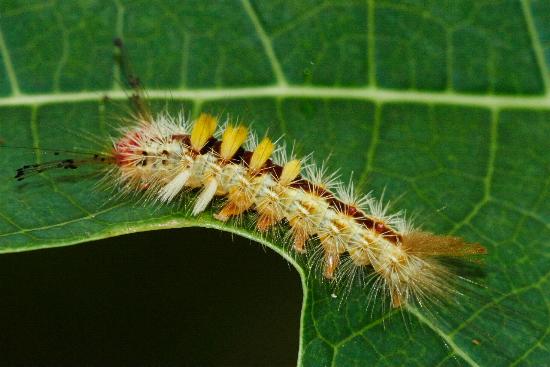
The head is scarlet, with two knobbed black hair pencils each side. There is another grey hair pencil on the tail. The hairs can cause irritation (urticaria) in people who have sensitive skin.
The caterpillars have been found feeding on a variety of plants including:

The caterpillars usually pupate in an off-white cocoon amongst the leaves of the foodplant.
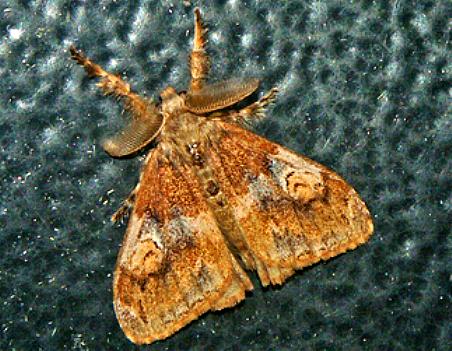
The male has brown patterned forewings, each with a complex spot near the middle, and variable white areas.
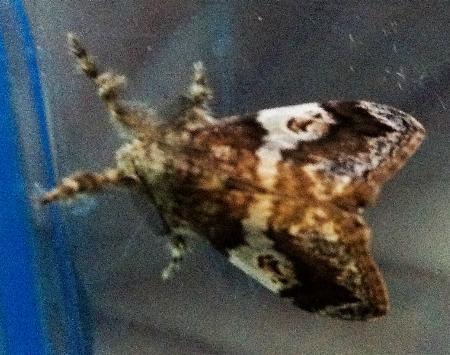
The hindwings are plain brown.
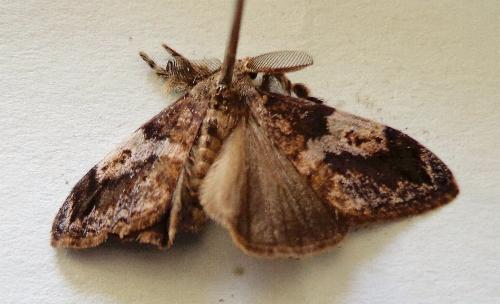
The undersides of the wings of the male are brown bearing shadows of the upper suface patterns. The wingspan of the male is about 3 cms.
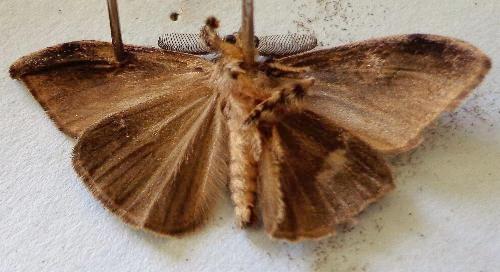
The female is flightless, and her bulbous body covered in pale yellowish hair.
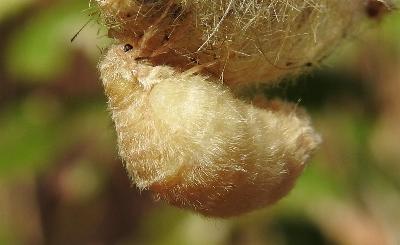
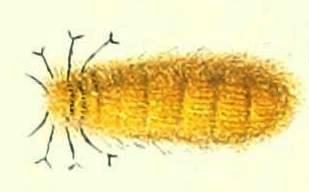
female: drawing by Embrik Strand
in Adalbert Seitz (ed.): The Macrolepidoptera of the World,
Stuttgart : Alfred Kernen Verlag, Volume 10 (1933), Plate 42, fig i5,
image courtesy of Biodiversity Heritage Library,
digitized by
Natural History Museum Library, London.
The eggs are white and spherical. They are laid on the cocoon out which the female emerged.
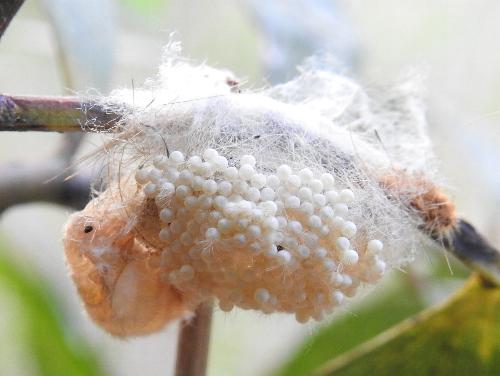
The species has been found in :
as well as in Australia in
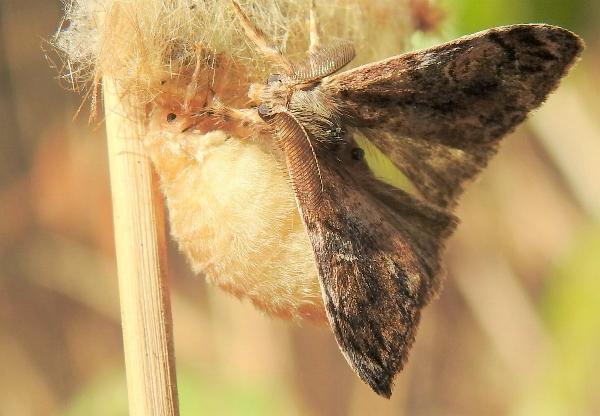
Further reading :
Ian F.B. Common,
Moths of Australia,
Melbourne University Press, 1990, fig. 43.7, pl. 30.10, p. 428.
Buck Richardson,
Tropical Queensland Wildlife from Dusk to Dawn Science and Art,
LeapFrogOz, Kuranda, 2015, p. 111.
Embrik Strand,
Pantana - Laelia,
in Adalbert Seitz (ed.):
The Macrolepidoptera of the World,
Stuttgart : Alfred Kernen Verlag, Volume 10 (1933), p. 304, and also
Plate 42, fig i5.
Francis Walker,
Catalogue of Lepidoptera Heterocera,
List of the Specimens of Lepidopterous Insects in the Collection of the British Museum,
Part 4 (1855), p. 787, No. 16.
 caterpillar |  butterflies |  Lepidoptera |  moths |  caterpillar |
(updated 28 February 2012, 26 August 2017, 27 February 2019, 12 May 2020, 14 March 2021, 26 January 2022)